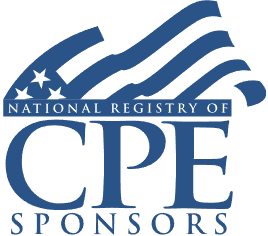ESOP Transactions in Estate Planning: Income and Transfer Taxes, Considerations for Closely-Held Business Owners

Course Details
- smart_display Format
On-Demand
- signal_cellular_alt Difficulty Level
Intermediate
- work Practice Area
Estate Planning
- event Date
Thursday, October 13, 2022
- schedule Time
1:00 p.m. ET./10:00 a.m. PT
- timer Program Length
90 minutes
-
This 90-minute webinar is eligible in most states for 1.5 CLE credits.
-
BARBRI is a NASBA CPE sponsor and this 110-minute webinar is accredited for 2.0 CPE credits.
-
BARBRI is an IRS-approved continuing education provider offering certified courses for Enrolled Agents (EA) and Tax Return Preparers (RTRP).
This CLE/CPE course will provide guidance to estate planners on utilizing employee stock ownership plan (ESOP) transactions for business succession planning and minimizing estate, gift, and generation-skipping transfer taxes. The panel will discuss the basics of ESOP structures and transactions, income and transfer tax considerations, key estate planning opportunities, utilizing trusts, life insurance, and other planning tools in the ESOP transaction setting.
Faculty

Mr. Lobb is the head of the Private Clients Group at Lobb & Plewe, which provides legal services for high-net-worth entrepreneurs, their businesses and their families. Mark serves on several non-profit boards of directors and is currently the President of a non-profit hospice. Mark has published many articles and provided many webinars and continuing education lectures on estate planning, asset protection, taxation and succession planning to professional and CEO groups.

Mr. Ray advises employers on the design, implementation, and regulatory compliance of tax-qualified and nonqualified retirement plans. In addition to counseling clients on all aspects of employee benefits, he appears before the IRS and the US Department of Labor to review penalty assessments, plan correction, and plan audit, among other benefits matters. Mr. Ray guides clients in employee stock ownership plan (ESOP) transactions, including seller-financed and leveraged and nonleveraged buyouts as part of ownership succession transactions.
Description
For closely-held business owners, the use of ESOPs can achieve their business succession and estate planning objectives. Estate planners must understand the basics of ESOP structures and the challenges involving the use of ESOP transactions for estate planning.
Generally, an ESOP allows business owners to reach their retirement goals, reward employees, and provide incentive programs to retain and attract executives. However, those wanting to sell their interests must consider the impact of an ESOP transaction on their current estate plan and what transfer strategies are available to minimize estate, gift, and generation-skipping transfer taxes.
Estate planners must recognize situations where the use of an ESOP may be an appropriate business succession tool. They must understand key estate planning and other considerations for the selling shareholders and the company, as well as fiduciary implications of employee ownership.
Listen as our panel discusses the basics of ESOP structures and transactions, income and transfer tax considerations, key estate planning opportunities, and how to utilize trusts, life insurance, and other planning tools in the ESOP transaction setting.
Outline
- Overview of ESOPs
- ESOPs for business succession
- ESOP transactions and estate planning
- Minimizing taxes
- Best practices for trusts and estates counsel
Benefits
The panel will discuss these and other key issues:
- ESOP basics and structure, as well as key issues for business succession and estate planning
- Mechanisms for utilizing ESOP transactions in estate planning
- Key considerations in using trusts, gifting, and other strategies for incorporating ESOP transactions in an estate plan
- Effectively minimizing income and transfer taxes
NASBA Details
Learning Objectives
After completing this course, you will be able to:
- Understand ESOP structures and key tax issues for business succession and estate planning
- Ascertain mechanisms for utilizing ESOP transactions in estate planning to minimize taxes
- Recognize key tax considerations in using trusts and gifting to effectively minimize income and transfer taxes
- Field of Study: Taxes
- Level of Knowledge: Intermediate
- Advance Preparation: None
- Teaching Method: Seminar/Lecture
- Delivery Method: Group-Internet (via computer)
- Attendance Monitoring Method: Attendance is monitored electronically via a participant's PIN and through a series of attendance verification prompts displayed throughout the program
- Prerequisite: Three years+ business or public firm experience preparing complex tax forms and schedules, supervising other preparers or accountants. Specific knowledge and understanding of estate, gift and trust taxation including various trusts types, the unified credit, and portability.

Strafford Publications, Inc. is registered with the National Association of State Boards of Accountancy (NASBA) as a sponsor of continuing professional education on the National Registry of CPE Sponsors. State boards of Accountancy have final authority on the acceptance of individual courses for CPE Credits. Complaints regarding registered sponsons may be submitted to NASBA through its website: www.nasbaregistry.org.

Strafford is an IRS-approved continuing education provider offering certified courses for Enrolled Agents (EA) and Tax Return Preparers (RTRP).
Related Courses

Estate Planning With Buy-Sell Agreements: Buy-Sell Plan Options, Key Provisions, Formulas, Valuation, Funding
Monday, April 14, 2025
1:00 p.m. ET./10:00 a.m. PT

Mastering Fiduciary Accounting Income for Estate Planners and Administrators
Friday, April 25, 2025
1:00 p.m. ET./10:00 a.m. PT

Estate Planning for Business Owners: Buy-Sell Agreements, Non-Family Interests, Valuation Considerations, Tax Issues
Wednesday, April 2, 2025
1:00 p.m. ET./10:00 a.m. PT
Recommended Resources
Building Your Book: Strategies to Secure Long-Term Success
- Business & Professional Skills
- Career Advancement
- Talent Development